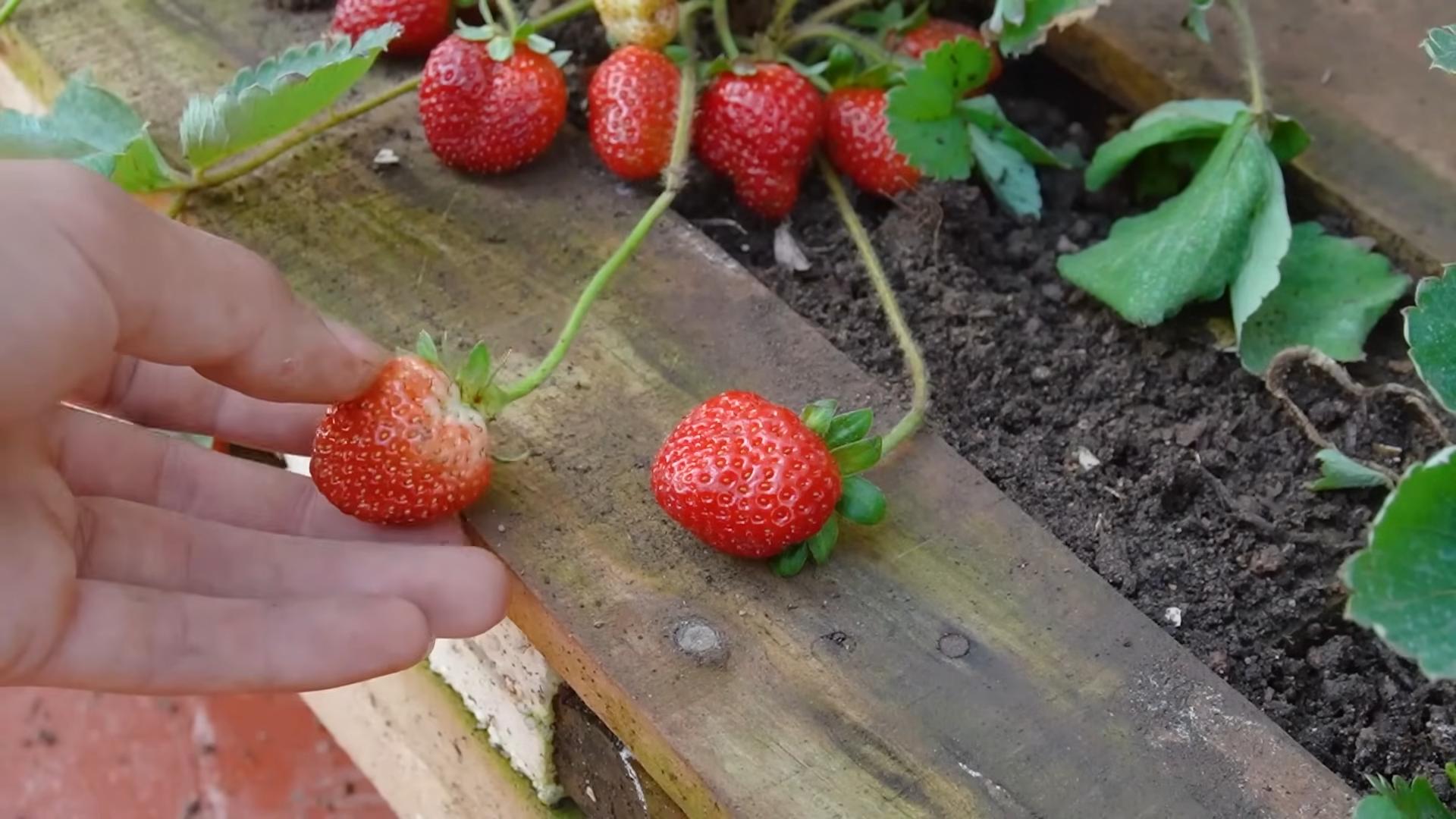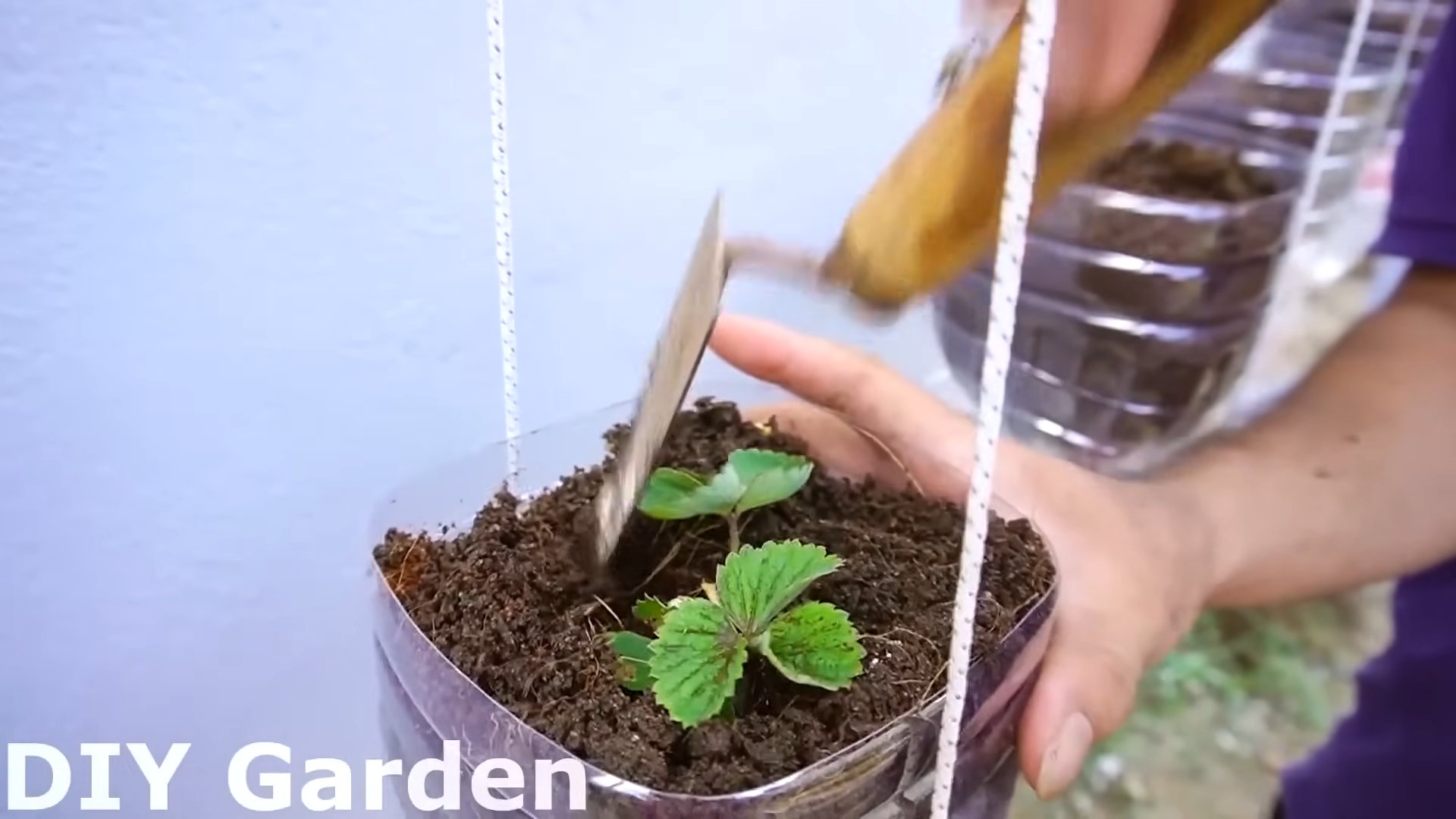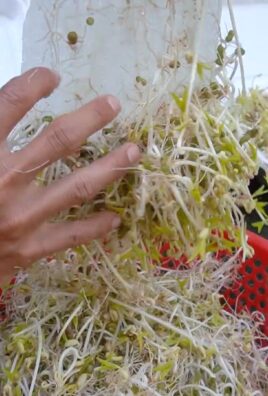Grow Strawberries at Home – imagine plucking juicy, sun-ripened strawberries straight from your own garden! Forget those bland, store-bought berries; with a few clever tricks and a little DIY spirit, you can cultivate a thriving strawberry patch right outside your door.
For centuries, strawberries have been cherished for their delightful flavor and nutritional benefits. From ancient Roman gardens to the strawberry fields of California, these little red gems have captured hearts (and taste buds!) across cultures. But you don’t need acres of land to enjoy this delicious fruit.
In today’s busy world, finding moments of connection with nature can be a challenge. That’s where home gardening comes in! Learning how to grow strawberries at home is more than just a fun hobby; it’s a way to de-stress, connect with the earth, and enjoy the unparalleled taste of homegrown goodness. Plus, knowing exactly where your food comes from gives you peace of mind. This DIY guide will provide you with simple, effective techniques to maximize your strawberry yield, even if you’re a complete beginner. We’ll cover everything from choosing the right varieties to protecting your plants from pests, ensuring you’ll be enjoying a bountiful harvest in no time. So, grab your gardening gloves, and let’s get started!

Grow Your Own Delicious Strawberries: A DIY Guide
Hey there, fellow gardening enthusiasts! I’m so excited to share my tried-and-true method for growing plump, juicy strawberries right at home. Forget those bland, store-bought berries – nothing beats the taste of homegrown goodness. This guide will walk you through everything you need to know, from choosing the right variety to harvesting your sweet rewards. Let’s get started!
Choosing Your Strawberry Variety
Before we dive into the nitty-gritty, let’s talk about strawberry varieties. There are three main types, and each has its own unique characteristics:
* **June-Bearing:** These strawberries produce one large crop per year, typically in late spring or early summer. They’re perfect if you want a big harvest all at once for making jam or freezing. Some popular June-bearing varieties include ‘Chandler,’ ‘Honeoye,’ and ‘Earliglow.’
* **Everbearing:** Don’t let the name fool you – everbearing strawberries don’t produce fruit continuously. Instead, they produce two or three crops per year: one in spring, one in late summer or early fall, and sometimes a smaller crop in between. ‘Ozark Beauty’ and ‘Seascape’ are excellent everbearing choices.
* **Day-Neutral:** These strawberries are the most consistent producers, yielding fruit throughout the growing season as long as temperatures are moderate. They’re a great option if you want a steady supply of strawberries for snacking. ‘Albion’ and ‘San Andreas’ are popular day-neutral varieties.
I personally recommend starting with everbearing or day-neutral varieties for a longer harvest season.
Preparing Your Strawberry Patch
Strawberries thrive in well-drained, slightly acidic soil (pH 5.5-6.5). Here’s how to prepare your planting area:
1. **Choose a Sunny Location:** Strawberries need at least 6-8 hours of sunlight per day to produce abundant fruit. Pick a spot in your yard that gets plenty of sunshine.
2. **Test Your Soil:** A soil test will tell you the pH level and nutrient content of your soil. You can purchase a soil testing kit at most garden centers or send a sample to your local agricultural extension office.
3. **Amend the Soil:** Based on your soil test results, amend the soil as needed. If your soil is too alkaline, you can lower the pH by adding sulfur or peat moss. If it’s too acidic, add lime. Incorporate plenty of organic matter, such as compost or well-rotted manure, to improve drainage and fertility.
4. **Clear the Area:** Remove any weeds, rocks, or debris from the planting area. Till the soil to a depth of 12 inches to loosen it up.
5. **Create Raised Beds (Optional):** Raised beds are an excellent option for growing strawberries, especially if you have heavy clay soil. They improve drainage and allow the soil to warm up faster in the spring.
Planting Your Strawberry Plants
Now for the fun part – planting your strawberry plants!
1. **Choose Your Planting Method:** You can grow strawberries in the ground, in raised beds, in containers, or even in hanging baskets. The method you choose will depend on your space and preferences.
2. **Space Your Plants:** Space June-bearing strawberries 18-24 inches apart in rows that are 3-4 feet apart. Everbearing and day-neutral strawberries can be planted closer together, about 12 inches apart in rows that are 2-3 feet apart.
3. **Dig the Holes:** Dig holes that are large enough to accommodate the root ball of your strawberry plants.
4. **Plant the Strawberries:** Gently remove the strawberry plants from their containers and loosen the roots. Place the plants in the holes, making sure that the crown (the point where the roots meet the stem) is level with the soil surface.
5. **Backfill and Water:** Backfill the holes with soil and gently firm it around the plants. Water thoroughly to settle the soil.
6. **Mulch:** Apply a layer of mulch around the strawberry plants to help retain moisture, suppress weeds, and keep the berries clean. Straw, pine needles, or wood chips are all good options.
Caring for Your Strawberry Plants
Proper care is essential for a bountiful strawberry harvest.
1. **Watering:** Strawberries need consistent moisture, especially during fruit production. Water deeply whenever the top inch of soil feels dry. Avoid overhead watering, as this can promote fungal diseases. Drip irrigation or soaker hoses are ideal.
2. **Fertilizing:** Fertilize your strawberry plants in early spring and again after the first harvest. Use a balanced fertilizer (e.g., 10-10-10) or a fertilizer specifically formulated for berries. Follow the instructions on the fertilizer label.
3. **Weeding:** Keep your strawberry patch free of weeds, as they can compete with the plants for nutrients and water. Hand-pull weeds regularly or use a hoe to cultivate the soil.
4. **Pest and Disease Control:** Strawberries can be susceptible to various pests and diseases, such as aphids, spider mites, slugs, and fungal diseases. Inspect your plants regularly for signs of problems and take action promptly. Organic pest control methods, such as insecticidal soap or neem oil, can be effective. For fungal diseases, ensure good air circulation and avoid overhead watering.
5. **Renovating June-Bearing Strawberries:** After the harvest, mow the foliage of June-bearing strawberries down to about 1 inch. This will encourage new growth and help prevent disease. Thin out the plants to maintain proper spacing.
6. **Removing Runners:** Strawberry plants produce runners, which are horizontal stems that grow along the ground and develop new plantlets. For June-bearing varieties, remove the runners to encourage the plants to focus their energy on fruit production. For everbearing and day-neutral varieties, you can allow some runners to develop to propagate new plants.
Protecting Your Strawberries from Pests and Animals
One of the biggest challenges of growing strawberries is protecting them from hungry critters. Birds, squirrels, and slugs are all notorious strawberry thieves. Here are some tips for keeping your berries safe:
* **Netting:** Cover your strawberry plants with netting to prevent birds and squirrels from getting to the berries.
* **Slug Bait:** Use slug bait to control slugs and snails. Be sure to use a pet-safe bait if you have pets.
* **Companion Planting:** Plant herbs like rosemary, thyme, and sage around your strawberries to deter pests.
* **Shiny Objects:** Hang shiny objects, such as aluminum pie plates or CDs, near your strawberry plants to scare away birds.
Harvesting Your Strawberries
The moment you’ve been waiting for – harvesting your delicious strawberries!
1. **When to Harvest:** Strawberries are ready to harvest when they are fully red and slightly soft to the touch. The berries should easily detach from the stem.
2. **How to Harvest:** Gently grasp the berry and twist it off the stem. Avoid pulling on the plant, as this can damage the roots.
3. **Harvest Regularly:** Harvest your strawberries every few days to prevent them from becoming overripe and attracting pests.
4. **Handle with Care:** Strawberries are delicate, so handle them with care to avoid bruising.
5. **Enjoy!** Eat your strawberries fresh, use them in recipes, or freeze them for later.
Troubleshooting Common Strawberry Problems
Even with the best care, you may encounter some problems while growing strawberries. Here are some common issues and how to address them:
* **Small Berries:** Small berries can be caused by insufficient sunlight, poor soil fertility, or overcrowding. Make sure your plants are getting enough sunlight, fertilize them regularly, and thin them out if necessary.
* **Lack of Fruit:** A lack of fruit can be caused by poor pollination, frost damage, or pests. Ensure that your plants are getting pollinated by bees or other insects. Protect them from frost by covering them with blankets or tarps. Control pests as needed.
* **Fungal Diseases:** Fungal diseases, such as gray mold and leaf spot, can be a problem in humid conditions. Ensure good air circulation, avoid overhead watering, and apply a fungicide if necessary.
* **Root Rot:** Root rot can occur in poorly drained soil. Improve drainage by amending the soil with organic matter or planting in raised beds.
Growing Strawberries in Containers
Don’t have a lot of space? No problem! You can easily grow strawberries in containers.
1. **Choose the Right Container:** Select a container that is at least 12 inches in diameter and 8 inches deep. Make sure it has drainage holes.
2. **Use a Good Quality Potting Mix:** Use a well-draining potting mix that is specifically formulated for containers.
3. **Plant Your Strawberries:** Plant your strawberry plants in the container, spacing them about 6 inches apart.
4. **Water and Fertilize Regularly:** Water your container strawberries whenever the top inch of soil feels dry. Fertilize them every two weeks with a balanced fertilizer.
5. **Provide Sunlight:** Place your container strawberries in a sunny location that gets at least 6

Conclusion
So, there you have it! Growing strawberries at home, especially with our simple DIY trick, is not just a fun project; it’s a gateway to enjoying the freshest, most flavorful berries you’ve ever tasted. Forget those bland, store-bought strawberries that have traveled miles – imagine plucking a sun-ripened, juicy berry straight from your own garden. The difference is truly remarkable.
This method, focusing on maximizing space and sunlight, is a game-changer for anyone with limited gardening space, whether you have a sprawling backyard or just a small balcony. It’s also incredibly rewarding to nurture something from a tiny seedling into a thriving plant that produces delicious fruit. The satisfaction of harvesting your own strawberries is unparalleled.
But the benefits extend beyond just taste and convenience. By growing your own strawberries, you’re also reducing your carbon footprint by cutting down on transportation and packaging. You know exactly what’s going into your food, avoiding potentially harmful pesticides and chemicals. It’s a healthier, more sustainable way to enjoy this beloved fruit.
Ready to take your strawberry game to the next level? Consider these variations:
* Vertical Strawberry Towers: If you’re really short on space, explore vertical strawberry towers. These structures allow you to grow a significant number of plants in a small footprint, maximizing your yield. You can purchase pre-made towers or even build your own using PVC pipes or repurposed materials.
* Hanging Baskets: Hanging baskets are another excellent option for balconies or patios. They add a touch of beauty to your space while providing a perfect environment for strawberries to thrive. Just be sure to choose a basket with good drainage and use a high-quality potting mix.
* Different Strawberry Varieties: Don’t limit yourself to just one type of strawberry! Experiment with different varieties to find your favorites. Everbearing strawberries produce fruit throughout the growing season, while June-bearing strawberries offer a larger harvest in a shorter period. Alpine strawberries are smaller and more intensely flavored.
* Companion Planting: Enhance your strawberry patch by incorporating companion plants. Basil, thyme, and borage are known to deter pests and attract beneficial insects, helping your strawberries thrive.
We’re confident that once you try this DIY trick for growing strawberries at home, you’ll be hooked. It’s a simple, effective, and incredibly rewarding way to enjoy fresh, delicious berries all season long.
Don’t just take our word for it – give it a try! We’re eager to hear about your experiences. Share your photos, tips, and successes in the comments below. Let’s create a community of home strawberry growers and inspire others to join the fun. Happy gardening!
Frequently Asked Questions (FAQ)
What is the best time of year to start growing strawberries?
The best time to plant strawberries depends on your climate and the type of strawberry you’re growing. In general, early spring or late fall are ideal times to plant. Spring planting allows the plants to establish themselves before the heat of summer, while fall planting gives them a head start for the following spring. For everbearing varieties, you can often plant them throughout the growing season, as long as you provide adequate water and protection from extreme temperatures. Check your local climate zone for specific recommendations.
What kind of soil is best for growing strawberries?
Strawberries thrive in well-drained, slightly acidic soil with a pH between 5.5 and 6.5. The soil should be rich in organic matter to provide essential nutrients and retain moisture. Before planting, amend your soil with compost, aged manure, or other organic materials to improve its fertility and drainage. Avoid heavy clay soils, as they can become waterlogged and lead to root rot. If you have clay soil, consider growing your strawberries in raised beds or containers with a well-draining potting mix.
How much sunlight do strawberries need?
Strawberries need at least six to eight hours of direct sunlight per day to produce abundant fruit. Choose a location that receives full sun for most of the day. If you live in a hot climate, some afternoon shade can be beneficial to prevent the plants from overheating. Insufficient sunlight can result in smaller yields and less flavorful berries.
How often should I water my strawberry plants?
Water your strawberry plants regularly, especially during dry periods. The soil should be consistently moist but not waterlogged. Water deeply and less frequently, rather than shallowly and more often, to encourage deep root growth. Check the soil moisture regularly by sticking your finger into the soil. If the top inch feels dry, it’s time to water. Avoid overhead watering, as it can promote fungal diseases. Drip irrigation or soaker hoses are ideal for delivering water directly to the roots.
How do I fertilize my strawberry plants?
Fertilize your strawberry plants in early spring, before they start producing new growth. Use a balanced fertilizer specifically formulated for berries, following the instructions on the package. Avoid over-fertilizing, as it can lead to excessive foliage growth and reduced fruit production. You can also amend the soil with compost or aged manure to provide a slow-release source of nutrients. During the growing season, you can apply a liquid fertilizer every few weeks to provide an extra boost.
How do I protect my strawberries from pests and diseases?
Strawberries are susceptible to various pests and diseases, including slugs, snails, aphids, spider mites, and fungal diseases like gray mold. To protect your plants, practice good garden hygiene by removing dead leaves and debris regularly. Use organic pest control methods, such as introducing beneficial insects or applying insecticidal soap. To prevent fungal diseases, ensure good air circulation around the plants and avoid overhead watering. Consider using a fungicide if necessary, following the instructions on the package. Bird netting can also be used to protect your berries from birds.
How do I harvest strawberries?
Harvest strawberries when they are fully ripe and have a deep red color. Gently twist the berry from the stem, leaving the green cap attached. Harvest in the morning, after the dew has dried, for the best flavor. Avoid bruising the berries during harvest. Store harvested strawberries in the refrigerator for up to a week.
How do I overwinter my strawberry plants?
In cold climates, strawberry plants need protection during the winter to survive. After the first frost, mulch the plants with straw, pine needles, or shredded leaves to insulate the roots. In very cold areas, you may also need to cover the plants with a row cover or tarp. Remove the mulch in the spring, after the last frost, to allow the plants to start growing again. Container-grown strawberries can be moved to a sheltered location, such as a garage or shed, during the winter.
Can I grow strawberries in containers?
Yes, strawberries grow very well in containers. Choose a container that is at least 12 inches in diameter and has good drainage. Use a high-quality potting mix and water regularly. Container-grown strawberries may need to be fertilized more frequently than those grown in the ground. They also need to be protected from extreme temperatures during the winter.
What are some common problems when growing strawberries and how can I fix them?
Some common problems include:
* Lack of fruit: Ensure the plants are getting enough sunlight, water, and nutrients. Check for pests and diseases.
* Small berries: This can be caused by insufficient watering, poor soil, or overcrowding. Thin out the plants if necessary.
* Rotting berries: This is often caused by fungal diseases. Ensure good air circulation and avoid overhead watering.
* Pest damage: Identify the pest and use appropriate organic pest control methods.
By addressing these common problems, you can ensure a successful and bountiful strawberry harvest.




Leave a Comment